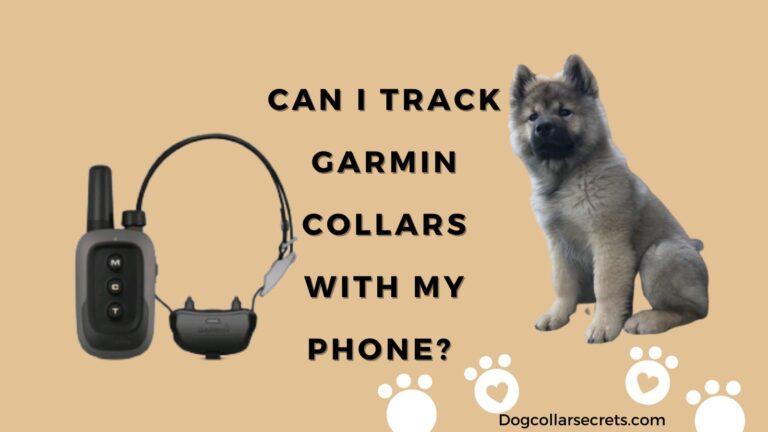“Can a shock collar help with aggression in dogs?”
Can a shock collar help with aggression in dogs?
“Can a shock collar help with aggression in dogs?” is a common question among pet owners dealing with the challenges of aggressive behaviors in their furry companions. Many wonder whether shock collars could be a useful tool or if there are better, more humane alternatives.
Recent studies shed light on this matter, indicating that dogs trained with shock collars not only exhibit more signs of stress but also release higher levels of cortisol, a stress hormone. Interestingly, these dogs are more prone to displaying aggressive behaviors compared to those trained using different methods.
Understanding the impact of training tools is especially crucial when dealing with aggressive dogs. The connection between stress and aggressive tendencies raises concerns about the effectiveness and ethical considerations of using shock collars.
As responsible pet owners, it becomes essential to weigh the potential risks against the benefits and seek alternative approaches that are both humane and science-based. This is particularly crucial when dealing with aggressive dogs, as their well-being and mental health should be a top priority. Let’s delve deeper into this topic, exploring solutions that not only address aggression but also prioritize the overall welfare of our beloved and sometimes challenging canine friends.
Can a shock collar help with aggression?
Exploring the role of shock collars in addressing aggression in dogs has become a topic of interest, with contrasting opinions circulating online. Utilizing remote collars can indeed play a vital role in rehabilitating dogs with aggression issues. However, it’s crucial to clarify that the effectiveness of shock collars lies in their proper use as a tool for redirecting a dog’s attention, rather than as a punitive measure.
Contrary to some misconceptions, simply placing a shock collar on a dog and using it as a reactive response to aggressive behavior is not a responsible or effective training approach. Such misuse can lead to worsened aggression or create adverse effects, causing distress to the dog. Instead, the key lies in incorporating shock collars within a comprehensive obedience training program, establishing a foundation before exposing the dog to triggers.
The initial step involves teaching fundamental obedience commands using the remote collar, providing the dog with an alternative focus during situations that typically provoke aggression. Commands like walking on a leash, recall, and stay are crucial components. Additionally, introducing a “look” or “watch” command enhances attentiveness, redirecting the dog’s focus from potential triggers to the handler and the assigned task.
The gradual exposure to triggers comes after the dog has mastered basic obedience. It’s essential to clarify that the shock collar is not employed as a punitive measure for aggressive responses. Instead, it is used proactively to prompt attentiveness and reinforce obedience commands before any negative reactions occur. For example, if a dog tends to react aggressively to other dogs, the shock collar can be employed to enforce a “Heel” command, encouraging polite walking around other canines without punishment for reactivity.
An advantage of using shock collars in aggression training is their ability to maintain a neutral stance, minimizing human emotion interference. This is particularly beneficial compared to other training collars that may require physical force, allowing handlers to remain composed during sessions. Moreover, shock collars offer the advantage of effective remote control, enabling commands like “Down” or recall from a distance, a practical feature for average dog owners.
It’s crucial to acknowledge that addressing aggression in dogs involves various considerations, and seeking guidance is recommended. Factors like potential health issues, fear-based behaviors, and genetic influences must be assessed by a veterinarian. Confidence-building exercises and desensitization play a crucial role, emphasizing the importance of proper timing for reward markers and the use of food as positive reinforcement to reshape the dog’s emotional response to triggers.
Conclusion
In conclusion, the inquiry into whether a shock collar can help with aggression reveals a nuanced perspective. While shock collars can indeed be a valuable tool in addressing aggression in dogs, it’s crucial to approach their use with responsibility and a comprehensive understanding of canine behavior. Incorporating shock collars as part of a broader training program, emphasizing obedience, and proactively redirecting the dog’s attention during potential triggers are pivotal aspects.
The misconception of using shock collars as a reactive measure to punish aggressive behavior should be dispelled. Instead, the focus should be on establishing a solid foundation of obedience commands, introducing shock collars gradually, and using them to prompt attentiveness before negative reactions occur. The neutral stance maintained by shock collars and their remote control capabilities add practicality to the training process, allowing handlers to remain composed and issue commands from a distance.
While shock collars play a role in attention redirection, it’s vital to acknowledge that they are not a standalone solution. Successful aggression management requires a holistic approach, considering factors like potential health issues, fear-based behaviors, and genetic influences. Seeking professional guidance and incorporating confidence-building exercises contribute to reshaping the dog’s emotional response to triggers.
In essence, the use of shock collars for aggression necessitates a commitment to consistency, dedication, and understanding the individual needs of the dog. When applied responsibly within a comprehensive training framework, shock collars can be a valuable aid in addressing aggression issues, contributing to a positive and effective rehabilitation process for our canine companions.
FAQ
Are shock collars bad for aggressive dogs?
While shock collars can be effective tools in addressing aggression, their misuse or excessive use can lead to negative consequences. It’s crucial to employ shock collars responsibly, integrating them into a comprehensive training program that prioritizes positive reinforcement and addresses the root causes of aggression. Professional guidance ensures safe and effective usage.
How do you stop aggression in dogs?
Addressing aggression involves a multifaceted approach. Positive reinforcement, obedience training, and understanding the triggers behind aggression are key. Shock collars, when used judiciously, can aid in redirecting attention and reinforcing desired behaviors. Seeking guidance from a professional trainer helps tailor a strategy that suits the individual dog’s needs.
Can you train aggression out of a dog?
Yes, aggression can be mitigated through proper training. A combination of positive reinforcement, obedience commands, and targeted exercises helps reshape the dog’s behavior. Shock collars, if used responsibly, can play a role in redirecting attention and reinforcing obedience. Consistency and patience are crucial in achieving positive outcomes.
Why is my dog starting to get aggressive?
Various factors, including fear, stress, territorial issues, or underlying health problems, can contribute to dog aggression. Identifying the root cause is essential. Professional evaluation, positive reinforcement training, and, if needed, the targeted use of shock collars can address and modify aggressive behavior.
When should I worry about dog aggression?
Concerns arise when aggression becomes excessive, unpredictable, or leads to harm. Consistent aggression towards people, other animals, or escalating intensity necessitates immediate attention. Professional intervention, behavior modification strategies, and, if deemed appropriate, the cautious use of shock collars can help manage and reduce aggressive tendencies.
Is aggression in dogs normal?
While some level of assertiveness is natural, excessive aggression is not considered normal behavior. It often indicates underlying issues requiring attention. Professional assessment, positive reinforcement training, and potential tools like shock collars, used responsibly, can contribute to modifying and managing aggression in dogs.




